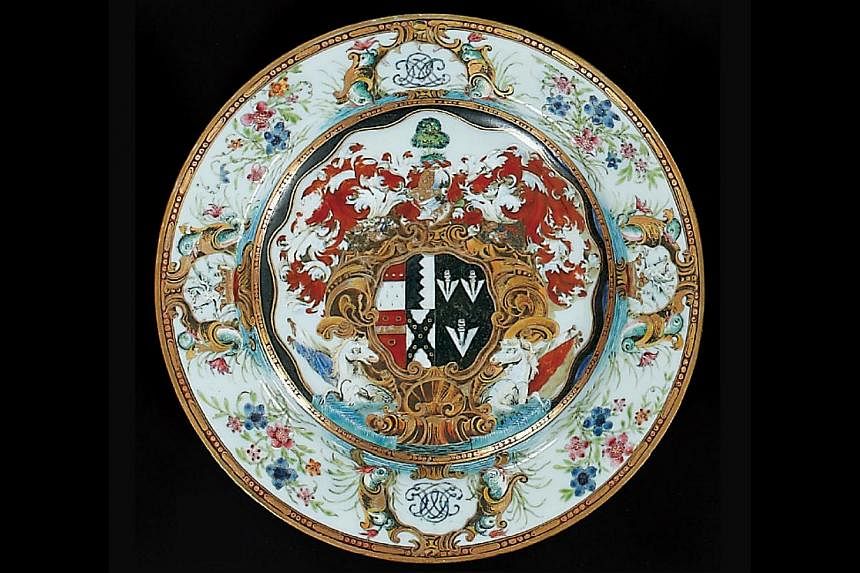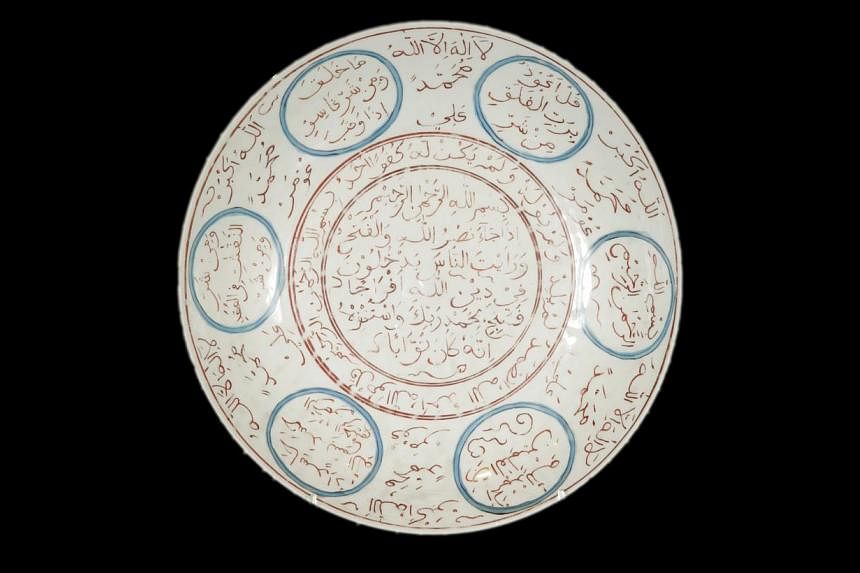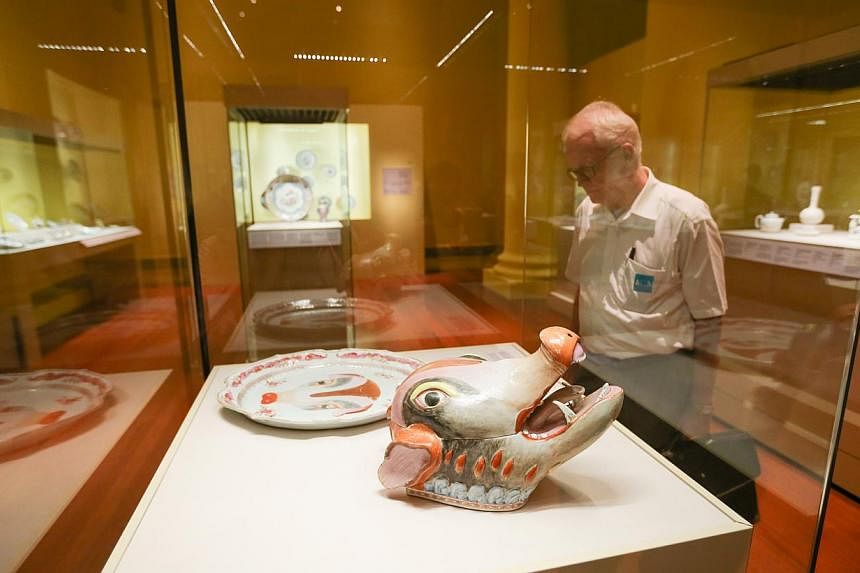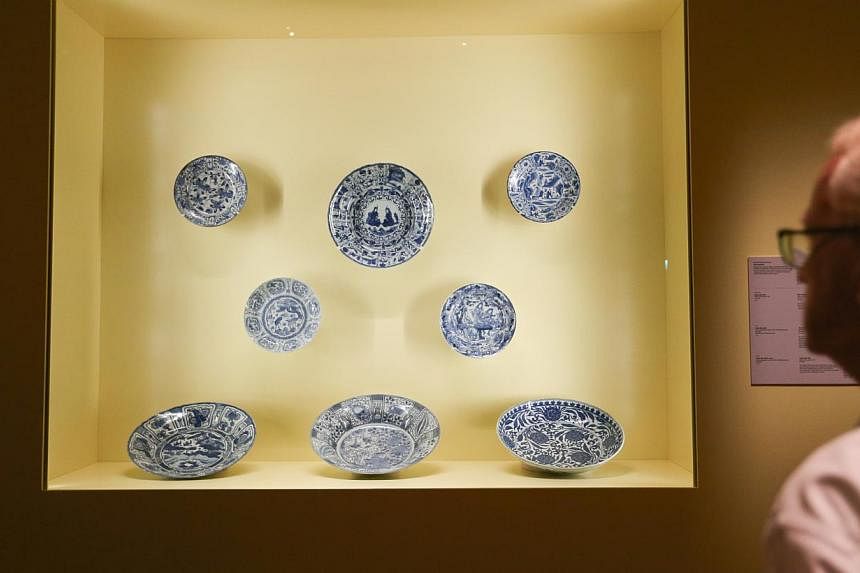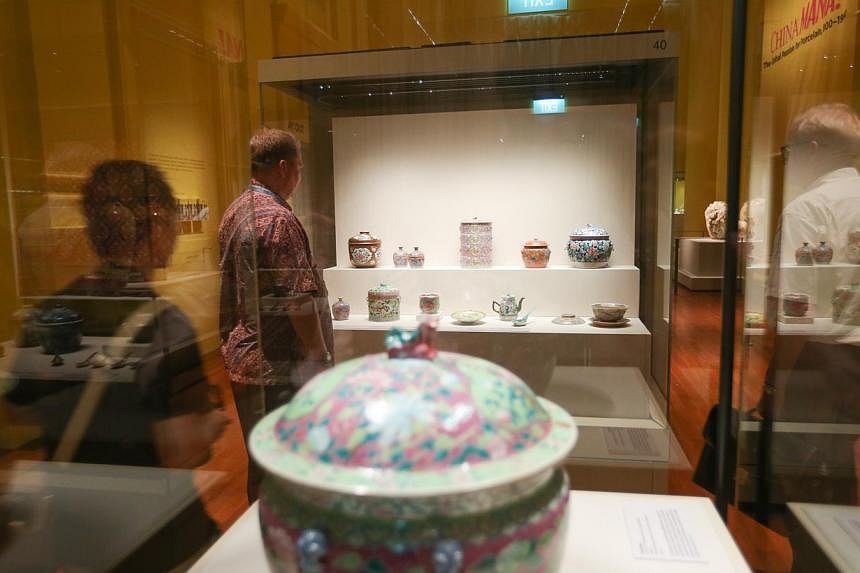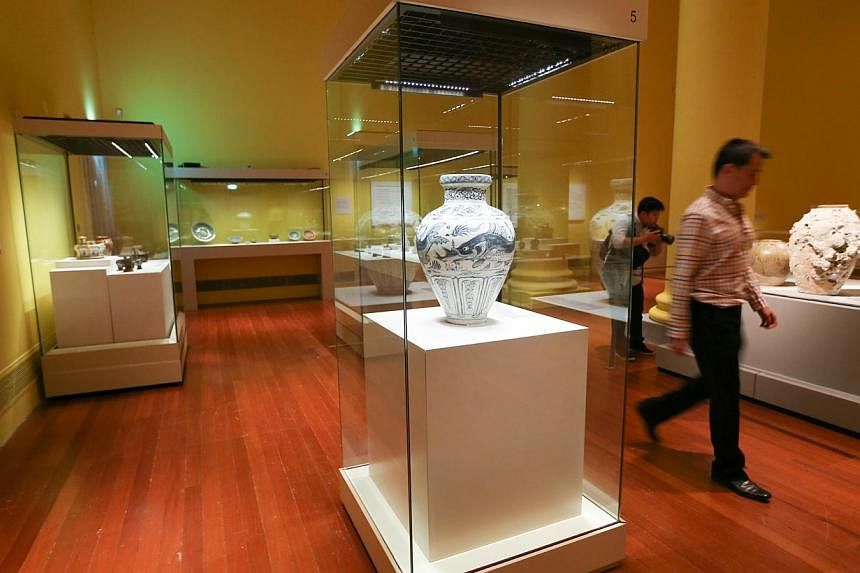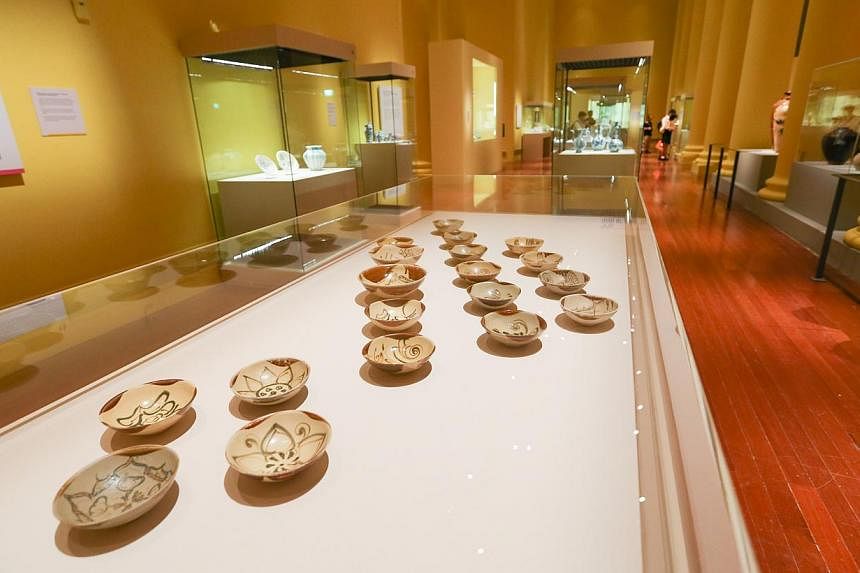Meet the original It item from many centuries ago - Chinese porcelain.
Dewy, delicate and oh-so-difficult to duplicate, the precious white ceramic was coveted around the world as early as the 9th century. Royalty, nobility and the socially aspirational all yearned to own a piece, or more, of china.
It is the star of a new show, China Mania! The Global Passion For Porcelain, 800-1900, at the Asian Civilisations Museum here.
Porcelain was first made in kilns in China during the Tang dynasty (618-907) but its early history and rise to domestic popularity is not the focus of this exhibition.
Instead, the more than 180 sumptuous artefacts on display tell the story of the international trade spurred by made-in-China porcelain and how it, in turn, fired up creativity in ceramic art and crafts.
To suit the taste of clients from different cultures, diverse forms and styles of porcelain were made, fusing Chinese motifs and designs with foreign aesthetic elements such as complex geometric patterns from the Middle East.
The popularity of china also sparked competition overseas, inspiring lookalikes and innovative copies. When exports of porcelain fell during periods of political instability in China, rival kilns such as those in South-east Asia seized the chance and filled the gap in supply.
Here are six highlights from the exhibition:
BOAR'S HEAD TUREEN WITH SERVING DISH

Porcelain with painted enamel, China, around 1760
Large ceramic tureens in the shape of animals, such as ducks, fish and boar, were popular in Europe in the second half of the 18th century. Served at meal times, such soup dishes are believed to have been first made in France and then copied by the Chinese for export to Europe.
This tureen, modelled after a boar's head, is vividly coloured and sports details such as finely painted bristles.
The top half of the boar's head lifts off like a lid so that soup or stew can be poured into the tureen or served from it. When covered, steam from the hot soup comes out of the boar's nostrils. The tureen is brought to the dining table with the matching serving dish that has a picture of a boar's head.
SET OF THREE BOWLS

Porcelain and painted enamel, China, 1879-1880
These bowls are part of a service made for Prince Zill al-Sultan (1850-1918), son of Shah Nasir of Iran and governor of Isfahan. He is identified by the Persian inscriptions on all three bowls.
The Persian calligraphy in gold and the decoration showing Chinese domestic scenes reflect a meeting of cultures, and how although this Chinese porcelain is tailored for the Iranian market, the Iranians also wanted images of China.
SET OF FIVE BOAR-SHAPED DISHES

Porcelain, China, 1621-1627
These small dishes were made to hold snacks served at the meal during a Japanese tea ceremony. Such dishes come in a variety of shapes and forms, in sets of five or 10. This set was recently acquired by the museum.
Unlike most porcelain, this has a rustic appearance, which suggests the client's taste for something less refined.
The paintwork lacks details and looks like it was done briskly. The rims of the dishes are rough and slightly chipped.
Analysis of the glaze shows that this was a deliberate effect; glaze was applied a little over the edge of the dishes so that it fuses only partially to create an appearance known as mushikui in Japanese, or moth-eaten.
INCENSE BURNER

Assembled in Europe, 18th century porcelain horse: China, 1661-1722; lacquer bowls: Japan, 17th century; gilded bronze mounts: France, 1770s
This is an unusual vessel with many components.
The porcelain horse, which rests on a base that is glazed green, perhaps to look like grass, is highly detailed and expressive.
Above it, two lacquer bowls are set rim to rim.
A metal tray inside the bowls would hold burning incense and smoke would escape through openings in the gilded band that holds the bowls together. The various parts are brought together by gilded bronze mounts and a piece of red coral tops off the burner.
This fantastical creation, blending objects from different cultures and the natural with the man-made, was popular during the Baroque and Rococo periods of the 17th and 18th centuries in Europe.
EWER IN THE FORM OF A DANCING WOMAN

Porcelain and painted enamel, China, 1522-1600
This water pitcher comes in the form of a colourful dancing woman, shown in court robes. Her raised arm forms a spout and her lowered arm, the handle. The naturalistic swirl of the robes makes the figure appear to be dancing.
Only a handful of other examples are known of this type of porcelain. Rarity does not, in itself, make this ewer special but the other pieces are documented in extraordinary collections, including an almost identical ewer in the collection of the Mughal emperor Jahangir, from around 1600, illustrated in one of his manuscript albums in Teheran.
This points to how Chinese porcelain was sought after around the world. This piece is a recent acquisition by the museum.
JAR

Stoneware, Northern Vietnam, 15th century
This stoneware jar was made in Vietnam following the Ming gap (1368-1398), when the Chinese imperial court forbade commercial exports of porcelain in order to use the precious ware exclusively as a diplomatic gift item.
This led potters and kilns in other countries to try and satisfy the demand for porcelain with imitation ware. This jar is made of clay that is fired at a lower temperature than porcelain and painted white to look like it.
There are Chinese motifs such as cloud patterns on the neck of the jar, but its design also fuses distinctively Vietnamese elements such as the depiction of fishes. The fishes are rendered with expressive eyes and hybrid forms - one fish is shown devouring a prey with an elephant-like trunk. This jar points to how potters overseas were embracing new ideas in porcelain even as they looked to imitate China.
View it
CHINA MANIA! THE GLOBAL PASSION FOR PORCELAIN, 800-1900
Where: Asian Civilisations Museum, 1 Empress Place
When: Till Dec 14, 10am - 7pm (Sat to Thur), 10am - 9pm (Fri)
Admission: Free for citizens, permanent residents and children aged six and below; $8 (adult), $4 (student and senior aged 60 and above)
